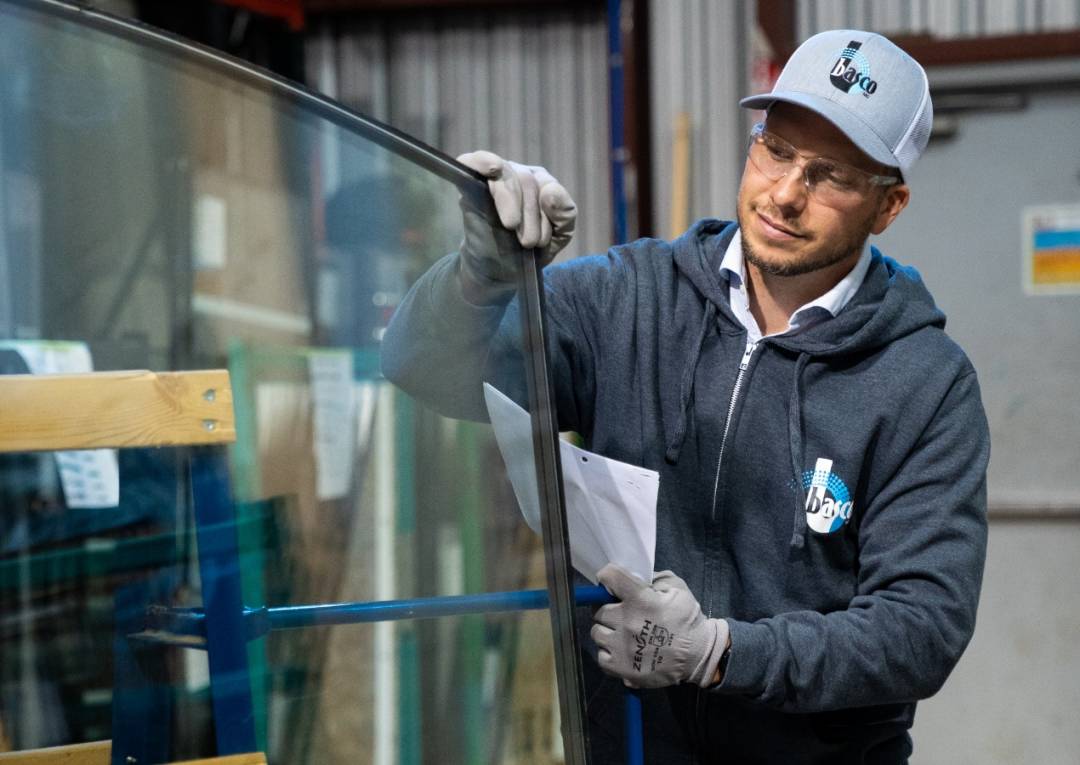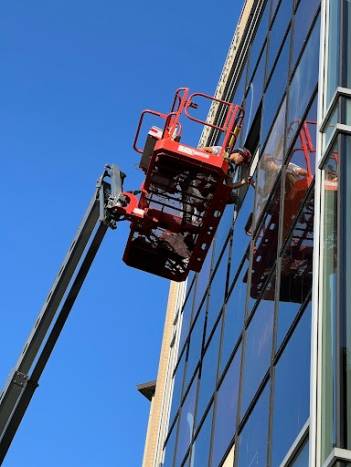
Alors, plongeons-nous dans le monde fascinant du vitrage de fenêtres et découvrons ensemble quelle option est la meilleure pour votre situation spécifique.
Determining the most suitable glazing for your home or commercial building may seem like a daunting task, but it's a crucial aspect of construction and renovation that can greatly impact your comfort, as well as your energy bill. At Basco Windows & Doors, we understand the importance of choosing the right glazing.
In this blog, we will help you understand the differences between single glazing, Low-E double glazing, and Low-E triple glazing. Whether you're looking to maximize thermal insulation, reduce noise, or simply understand the technical terms behind these options, we have all the answers to your questions.
Let’s explore together the best options for your specific needs.
What are the Different Types of Glazing?
Single-Glazed Windows
A single-glazed window is a window that has only one glass panel. It is often used in regions where thermal and sound insulation is not a major priority. It's the oldest and simplest type of window that can be found.
It's important to note that single-glazed windows are generally not recommended for most modern homes, especially in regions that have cold winters, like here in Canada. Single glazing doesn't provide much thermal insulation, which means a significant amount of indoor heat can escape through the windows during the winter months, thus increasing heating costs. Additionally, single-glazed windows do not offer as much sound insulation as a double or triple-glazed windows.
“Single-glazed windows lose about 10 to 20 times as much heat as the same area of a properly insulated wall. Storm windows or double-glazed sealed units will reduce the heat loss by almost half.”- Government of Canada
Single-glazed windows are often replaced by double or triple-glazed windows, which offer better thermal and sound insulation. Keep reading to learn more.
Low-E double-glazed Windows
A Low-E double-glazed window, also known as ClimaGuard 80/70 or thermal glass, is a type of window that has been specifically designed to improve thermal insulation and minimize heat loss. This type of window meets the ENERGY STAR® requirements in all northern climate zones.
“Double glazing” refers to a window that has two glass panels with a space between them. This space is typically filled with an inert gas, such as argon, which has better thermal insulation than regular air.
“Low-E” stands for “low emissivity”, meaning the glass has been treated with a thin coating that reflects heat. This coating helps minimize the amount of heat lost through a window while allowing sunlight to pass through.
When you see a window described as ClimaGuard 80/70, it means it has a visible light transmittance of 80% and a solar heat gain coefficient of 70%. In other words, 80% of visible light and 70% of solar energy can pass through the window. This can help naturally heat a home in winter while blocking some of the sun's heat in summer to keep your house cool.
Low-E double glazing windows are a popular choice for those looking to improve the energy efficiency of their home, as they can help reduce heating and cooling costs. The perfect glazing for our Canadian climate!
Low-E Triple-glazed windows
A Low-E triple-glazed window, also known as ClimaGuard 80/70 + 70/36 or triple-glazed thermal glass, is a highly efficient window in terms of thermal and acoustic insulation. As the name suggests it, this window is equipped with three glass panes instead of two (for a double-glazed window).
The same applies to double-glazed windows, for which the term "Low-E" refers to low emissivity, meaning the glass panels have been treated with a coating that reflects heat.
The space between each pane is typically filled with an inert gas, such as argon or krypton, which offers superior thermal insulation compared to air. This further reduces heat loss, making these windows particularly effective in cold climates and/or in high-energy-efficient buildings.
When a window is described as ClimaGuard 80/70 + 70/36, it means it has a visible light transmittance of 80%, a first solar heat gain coefficient of 70%, followed by a second solar heat gain coefficient of 70%, and a visible light transmittance of 36%.
In conclusion, a Low-E triple-glazed window offers superior thermal and acoustic insulation, that can significantly reduce heating and cooling costs. These windows are particularly recommended in regions with extreme climates and/or for high-energy-efficient buildings.
Commercial and Residential Buildings: Which Glazing to Choose?

The choice of glazing for commercial and residential buildings depends on several factors, including the region's climate, the building's orientation, the desired level of thermal and acoustic insulation, and the available budget.
Commercial Buildings: Commercial buildings often have large glass surfaces, which can result in significant heat loss in winter and overheating in summer. For these buildings, high-performance glazing is generally recommended. You could then choose to get Low-E double glazing or, for even better insulation, Low-E triple glazing. These types of glazing can help reduce heating and cooling costs while improving the occupants' comfort. Additionally, in noisy urban areas, triple glazing can provide better sound insulation.
Residential Buildings: For residences, the choice of glazing also depends on the above-mentioned factors. In regions with mild climates, single glazing may suffice. However, for colder regions and/or highly energy-efficient homes, Low-E double or triple glazing may be preferable. These windows offer excellent thermal insulation and can help reduce heating costs.
It's also important to consider the building's orientation. For south-facing windows, glazing with high solar transmittance can be beneficial for harnessing solar heat in winter.
Finally, cost can be a determining factor. Low-E double and triple-glazed windows are more expensive than single or standard double-glazed windows, but they offer long-term energy savings that can offset the higher initial cost.
It is recommended to consult a professional for specific advice tailored to your situation. The experts at Basco Windows & Doors can help you choose the most suitable glazing type based on your specific needs, to ensure the best energy efficiency and comfort for your commercial or residential building.